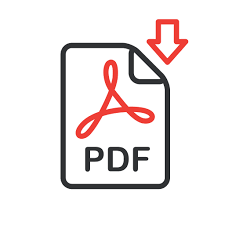FACTS ABOUT THE CZECH REPUBLIC
Location: Central Europe
Capital City: Prague
Population: 10,649,800 (approximately in 2019)
Area: 78,866 sq. km
The highest point: Sněžka 1 603 m
The lowest point: Elbe River 115 m
Government: Parliamentary republic
Language: Czech
Currency: Czech crown/koruna
As in the article about Slovakia, let’s begin with the foreigners’ knowledge about the Czech Republic or Czechia as it has been called since 2016.
You might wonder what countries people can confuse with Czechia. Do you have any idea? Think for a while about countries in the world which have similar names or which sound similar to Czechia. Surprisingly, Chechnya. Yes, it really happened that some people confused Czechia with Chechnya. On the other hand, the name of the capital city Prague is better known worldwide than the name of the country itself. Recently, Prague has become a very popular destination not only for tourism but also as a good place for living and studying. It offers wide varieties of sightseeing, beautiful classic baroque and gothic architecture, rich cultural life – museums, galleries and concerts, sport events and many opportunities for clubbing. Once tourists come to Prague, they are also attracted to historical towns and natural beauties which are on the list of UNESCO heritage¹ and they go for one-day trips there. Which Czech UNESCO sites are frequently visited by foreigners?
While speaking about tourism, a large number of Czechs like spending holidays in their own country and the destination depends on the season. In the summer, a typical Czech family visits classical Bohemian and Moravian castles and chateaus (Karlštejn, Český Krumlov, Loket, Hluboká nad Vltavou, Lednice, Valtice…), which attract visitors by guided and animated excursions, by spectacles and fencing contests on the courtyards and by local craftsmen’s² products sold on the market. Nearly everybody from the CR likes spending summer time outdoors: rafting on the local rivers (Vltava, Elbe, Sázava, Berounka…); hiking and cycling in the mountains (Giant mountains, Jizera, Šumava, Jeseníky or just collecting mushrooms in the forest. By the way, mushrooming is sometimes compared to a national sport thanks to its high popularity in the whole country.
In the autumn, the season of harvest³, adults enjoy going on wine festivals called vintage4, mostly in the region of South Moravia. The celebration of new wine and its testing is accompanied by live folklore music, dancing and food stalls.
As soon as snow covers the slopes of hills and yards, sporty Czechs go for downhill skiing and snowboarding on Giant mountains, Šumava, Ore (Krušné) mountains and Jeseníky and for cross-country skiing mostly on Jizera mountains. It is common that people from cities have a weekend house in the mountains so they can spend weekends, Christmas and winter holidays there.
Although it might be a bit unusual, schoolchildren typically spend their spring holiday skiing on the mountains. Otherwise there are not many events during spring apart from the Prague Spring International Music Festival and a traditional countrywide carnival lent (masopust/ fašiangy). Classical music lovers must think of buying tickets for Prague Spring Music Festival in advance because tickets are quickly sold out since the festival presents the world best musicians and symphony orchestras. It seems that Prague cultural events draw the attention of foreigners as well as of Czechs and this is only one of the reasons why you should visit. Have you ever been to Prague? If not, are you planning to go there? Why? Why not?
Vocabulary: 1 an important part of social and cultural identity of a country, e.g. historical monuments, traditions, language; 2 a person who produces, 3 cutting and collecting of crops from the fields, e.g. grain/ potato/grape harvest; 4 picking of grapes for winemaking; 5 a person who produces or makes something by hand with a help of some tools, e.g. smith, potter, carpenter, painter, baker; 6 to attract somebody, be interesting for somebody
 The Czech Republic-Czechia.pdf
The Czech Republic-Czechia.pdf
